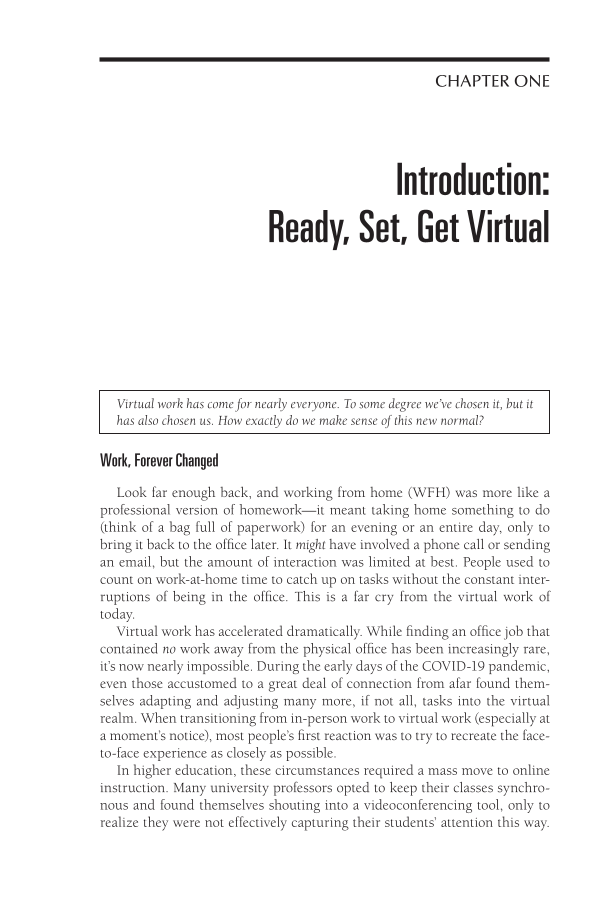CHAPTER ONE Introduction: Ready, Set, Get Virtual Virtual work has come for nearly everyone. To some degree we’ve chosen it, but it has also chosen us. How exactly do we make sense of this new normal? Work, Forever Changed Look far enough back, and working from home (WFH) was more like a professional version of homework—it meant taking home something to do (think of a bag full of paperwork) for an evening or an entire day, only to bring it back to the office later. It might have involved a phone call or sending an email, but the amount of interaction was limited at best. People used to count on work-at-home time to catch up on tasks without the constant inter- ruptions of being in the office. This is a far cry from the virtual work of today. Virtual work has accelerated dramatically. While finding an office job that contained no work away from the physical office has been increasingly rare, it’s now nearly impossible. During the early days of the COVID-19 pandemic, even those accustomed to a great deal of connection from afar found them- selves adapting and adjusting many more, if not all, tasks into the virtual realm. When transitioning from in-person work to virtual work (especially at a moment’s notice), most people’s first reaction was to try to recreate the face- to-face experience as closely as possible. In higher education, these circumstances required a mass move to online instruction. Many university professors opted to keep their classes synchro- nous and found themselves shouting into a videoconferencing tool, only to realize they were not effectively capturing their students’ attention this way.
Document Details My Account Print multiple pages
Print
You have printed 0 times in the last 24 hours.
Your print count will reset on at .
You may print 0 more time(s) before then.
You may print a maximum of 0 pages at a time.









































































































































































































